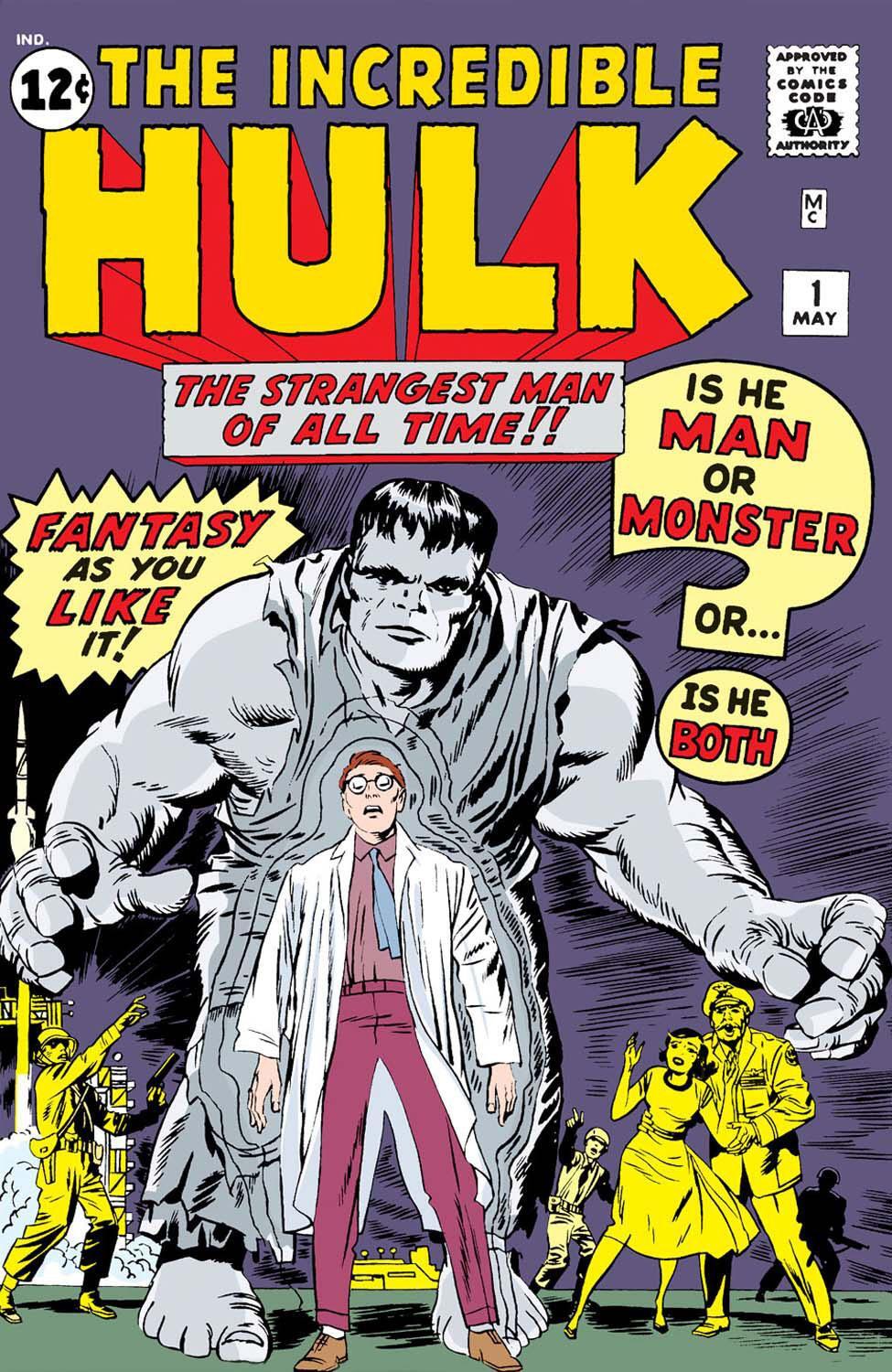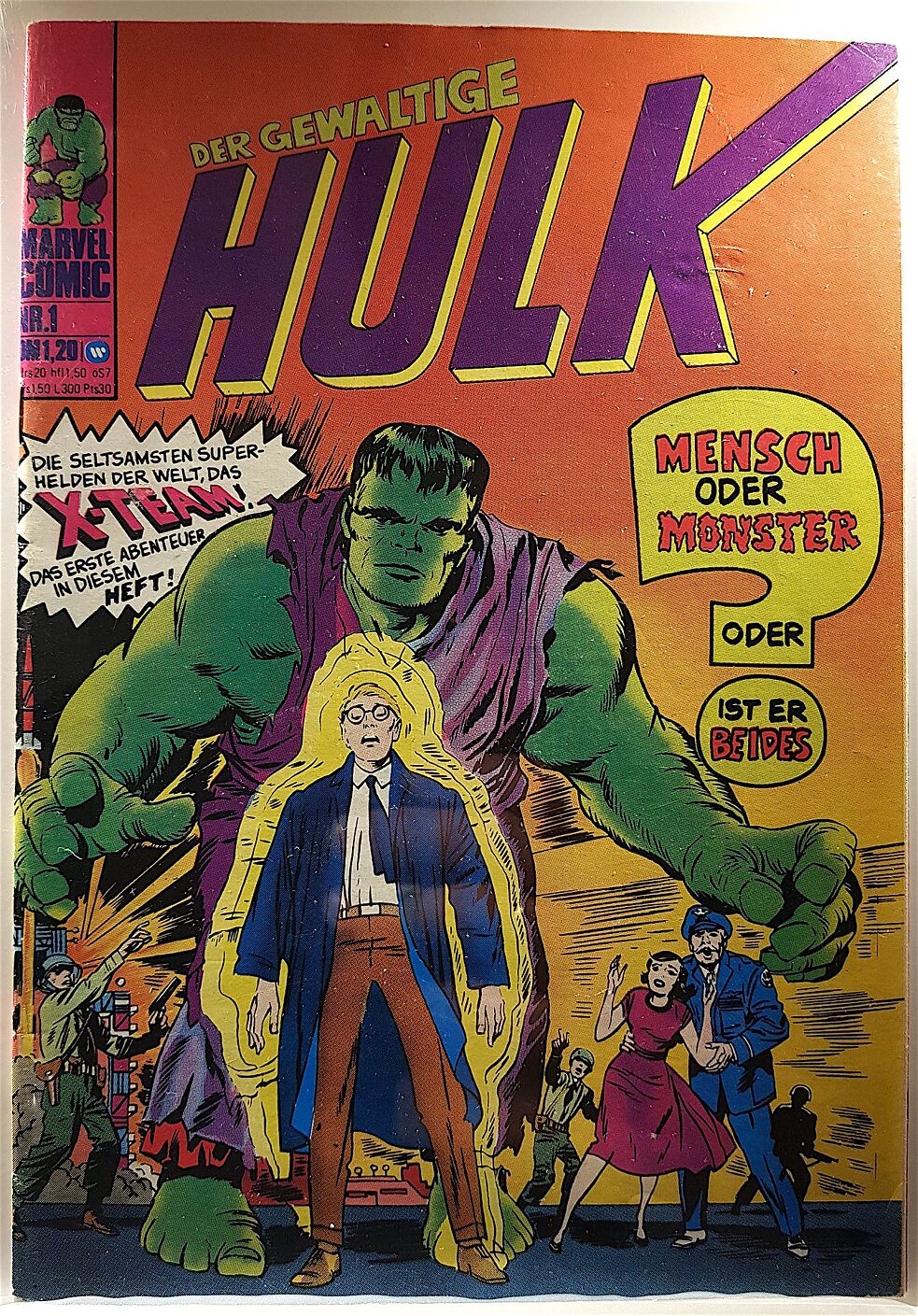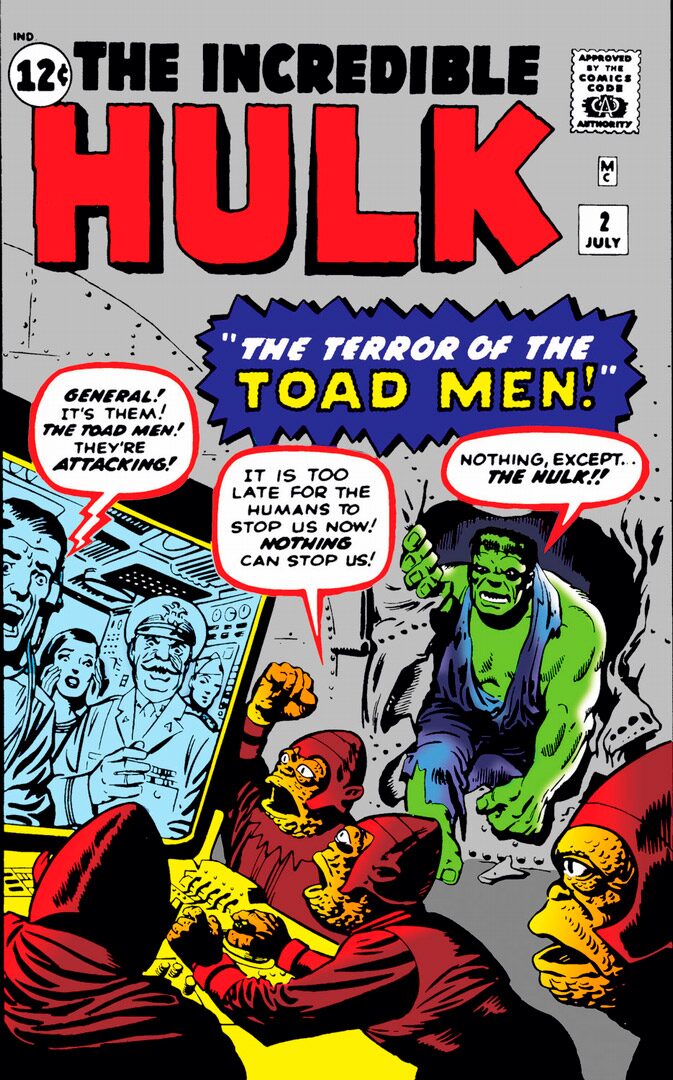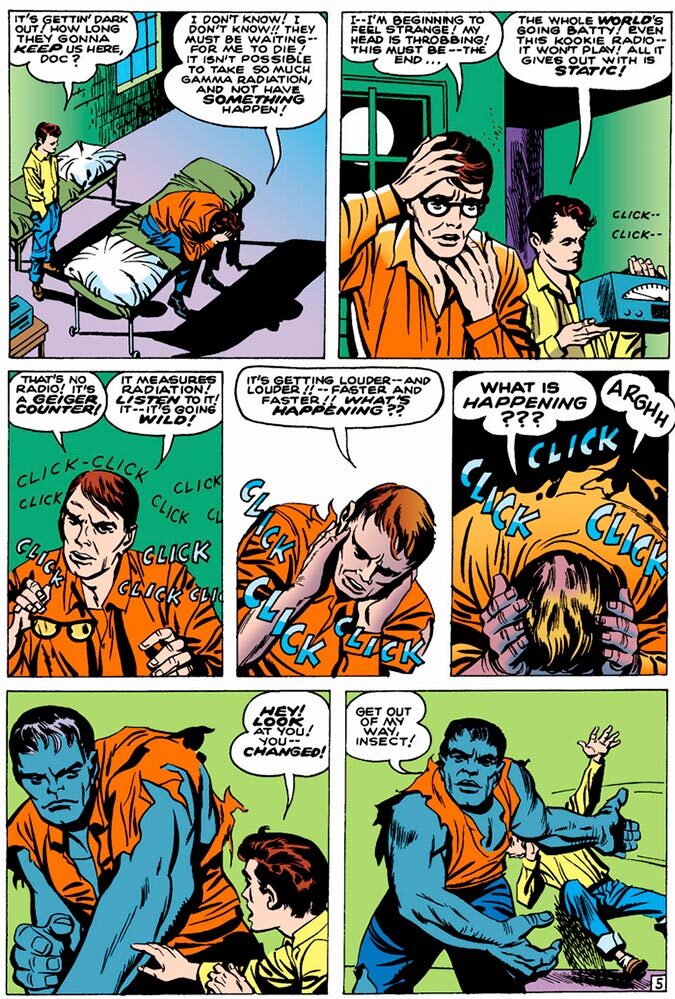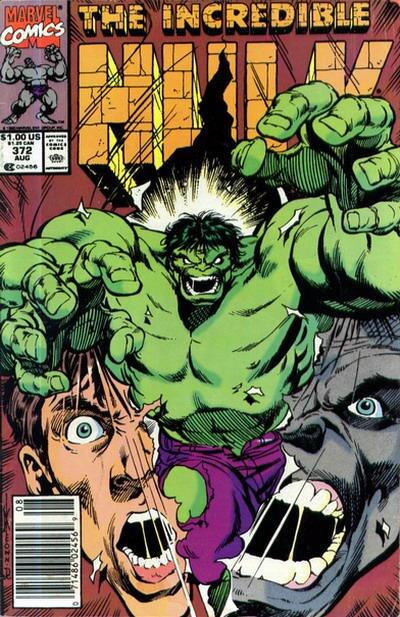A Famous Misprint
Gray Hulk – Green Hulk!
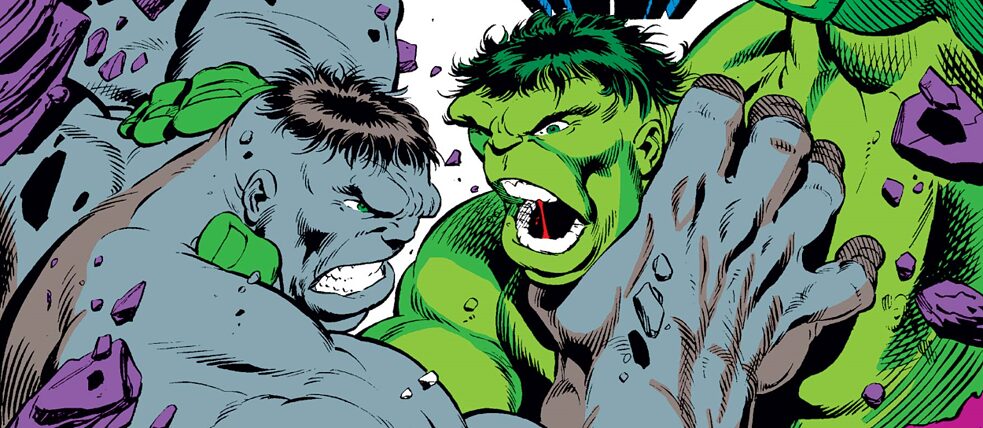
“Is he man or monster, or is he both?” was the question posed on the cover of the 1962 Marvel Comic The Incredible Hulk #1; a perfect description of the schizophrenic psyche of this future Marvel character. For fans of superhero comics, the Incredible Hulk has been an iconic figure for almost 60 years and even the uninitiated will be familiar with this angry green monster following the phenomenal success of the Marvel Avengers movies. Green? If it hadn’t been for a printing error, the Incredible Hulk would have only been gray (and perhaps not nearly so popular).
By Stefan Kloo
Stan Lee, the man who created the Incredible Hulk, originally envisioned a gray-skinned hulk. Inspired by the Boris Karloff incarnation of Frankenstein’s tormented monster, Robert Louis Stevenson’s Dr. Jekyll and Mr. Hyde, and the golem from Jewish mythology, the character was intended to replicate the success of the orange-hued fan favorite The Thing from the Fantastic Four. As with The Thing, his skin color and grotesque stature were to be his unique defining features, as the Hulk would also have to do without any spandex outfit or cape. Stan Lee picked gray for the Hulk because he didn’t want to invoke any associations with a particular ethnic group and because he wanted a color that would appear “scary and chilling.”
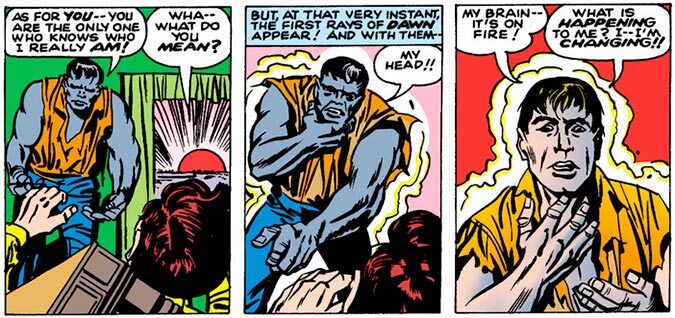 © Grand Comics Database™ (CC BY-SA 4.0)
In the first edition of the Hulk comic, however, the color that Lee had wanted turned out to be a mixture of various gray and even slightly greenish shades. On some pages, the Hulk appeared radiant with a bright and almost metallic complexion, while on others his skin was a much darker charcoal-gray. The colors used in the actual comic simply did not correspond to the original copies supplied by the colorist Stan Goldberg. The misprint can be explained: if in CMYK printing the color gray is desired but green is produced instead, it’s most likely because the press density is either too light on magenta or too heavy on a combination of cyan and yellow. When Lee saw the first published edition in which the Hulk’s skin at times had a greenish shimmer, he asked his colorist Stan Goldberg to make the Hulk green for the second edition. And that is how things remained: in most reprints, the first-edition Hulk was touched up to make him green, and the “Jolly Green Giant” was to become one of the most popular and complex stars in the Marvel Universe. Since the Hulk’s green skin has become so fundamental to the character, the misprint turned out to be serendipitous: it is estimated that this green antihero has generated more than a billion dollars in character licensing fees since his gray debut.
© Grand Comics Database™ (CC BY-SA 4.0)
In the first edition of the Hulk comic, however, the color that Lee had wanted turned out to be a mixture of various gray and even slightly greenish shades. On some pages, the Hulk appeared radiant with a bright and almost metallic complexion, while on others his skin was a much darker charcoal-gray. The colors used in the actual comic simply did not correspond to the original copies supplied by the colorist Stan Goldberg. The misprint can be explained: if in CMYK printing the color gray is desired but green is produced instead, it’s most likely because the press density is either too light on magenta or too heavy on a combination of cyan and yellow. When Lee saw the first published edition in which the Hulk’s skin at times had a greenish shimmer, he asked his colorist Stan Goldberg to make the Hulk green for the second edition. And that is how things remained: in most reprints, the first-edition Hulk was touched up to make him green, and the “Jolly Green Giant” was to become one of the most popular and complex stars in the Marvel Universe. Since the Hulk’s green skin has become so fundamental to the character, the misprint turned out to be serendipitous: it is estimated that this green antihero has generated more than a billion dollars in character licensing fees since his gray debut.
Hidden within the schizophrenic ontology of the Hulk (and of Marvel Comics as such), attentive readers can thus find a complex analysis of very human traits. Where other Marvel characters battle with heartache, loss, alcoholism, trauma, or their identity, this uncontrollable superhero has come to symbolize inner rage, latent angst, stress, and unresolved psychological strain. And when the Hulk of the Marvel Cinematic Universe declares before his most spectacular transformation in the battle for New York, “That’s my secret – I’m always angry,” it becomes clear that only his intellect, and a small portion of love, keep the monster inside him in check. This is an important realization for any viewer confused by his or her own anger and irrational emotions. Maybe all of us are “sometimes gray, sometimes green, sometimes daft, sometimes keen,” and perhaps in this self-reflective insight lies our secret.
